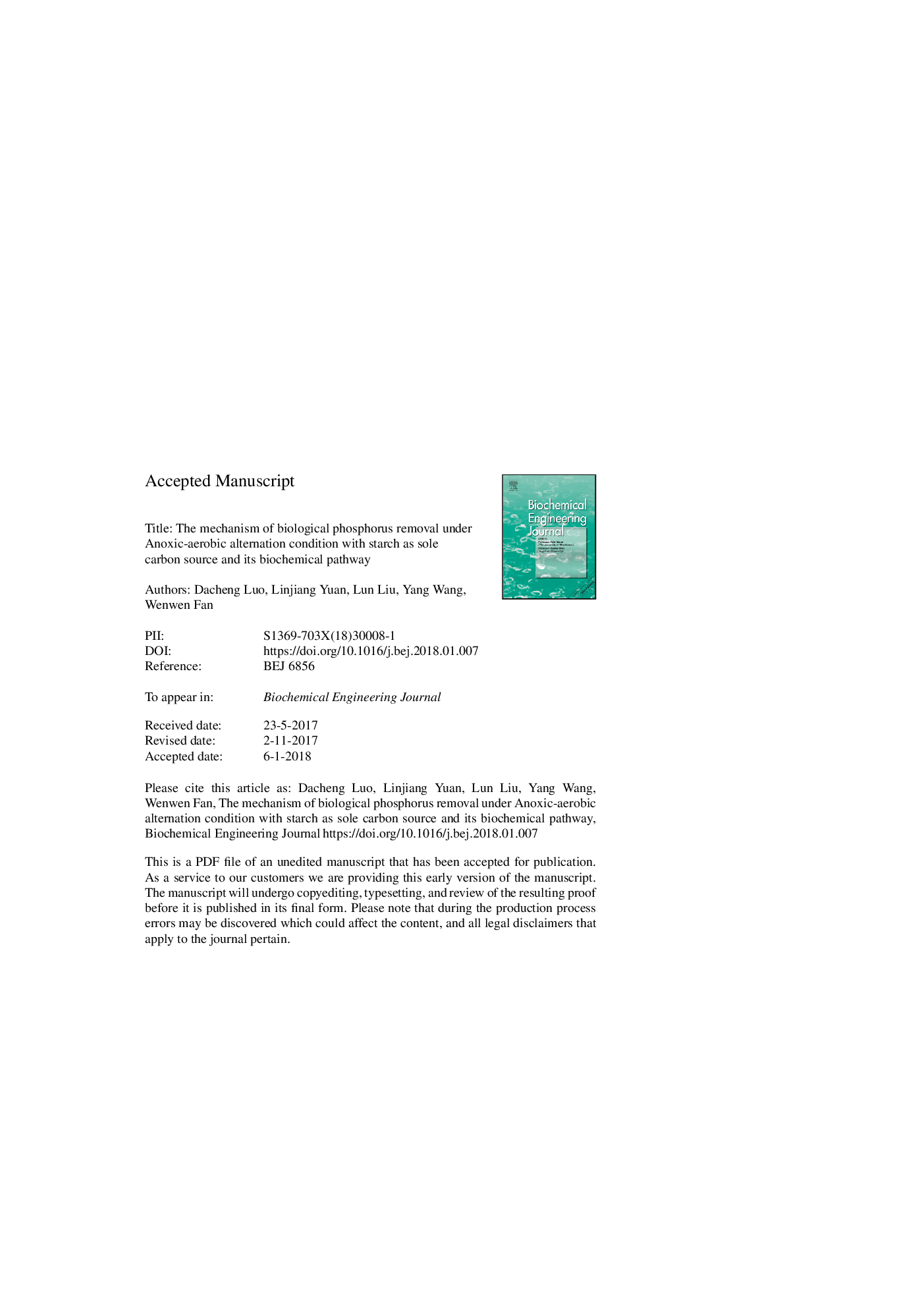| Article ID | Journal | Published Year | Pages | File Type |
|---|---|---|---|---|
| 6482259 | Biochemical Engineering Journal | 2018 | 20 Pages |
Abstract
A new excess phosphate uptaking in an anoxic-aerobic sequencing batch reactor (SBR) using starch as sole carbon source that was different from the traditional biological phosphorus removal in anaerobic-aerobic alternation condition was confirmed and reported previously. To reveal its mechanism and biochemical pathway of metabolism, this study was conducted. Nuclear magnetic resonance (NMR) technique was applied to trace the carbon metabolism in the SBR applied by supplying 13C label starch. Results show that the phosphorus removal reached 80% without any P release during the whole process. The sludge had a very lower accumulation of polyhydroxyalkanoates (PHAs) but a higher accumulation of glycogen. The metabolic pathway of glycogn synthesis and phosphorus removal was proposed that during the anoxic phase, the starch was hydrolyzed and then converted to lactic acid by lactic acid producing organism (LPO). Adenosine triphosphate (ATP) was generated from the lactic acid formation, and used for polyphosphate (poly-P) synthesis. In the meantime, lactic acid was used to synthesize glycogen by phosphate accumulating organisms (PAOs). In the aerobic stage, PAOs oxidized glycogen to release energy for cell growth and its maintenance, as well as phosphate uptake and poly-P synthesis. The LPO performed the majority of the P removal in the SBR during the anoxic stage. This study improves our understanding to how phosphorus removed in the anoxic-aerobic system.
Related Topics
Physical Sciences and Engineering
Chemical Engineering
Bioengineering
Authors
Dacheng Luo, Linjiang Yuan, Lun Liu, Yang Wang, Wenwen Fan,
